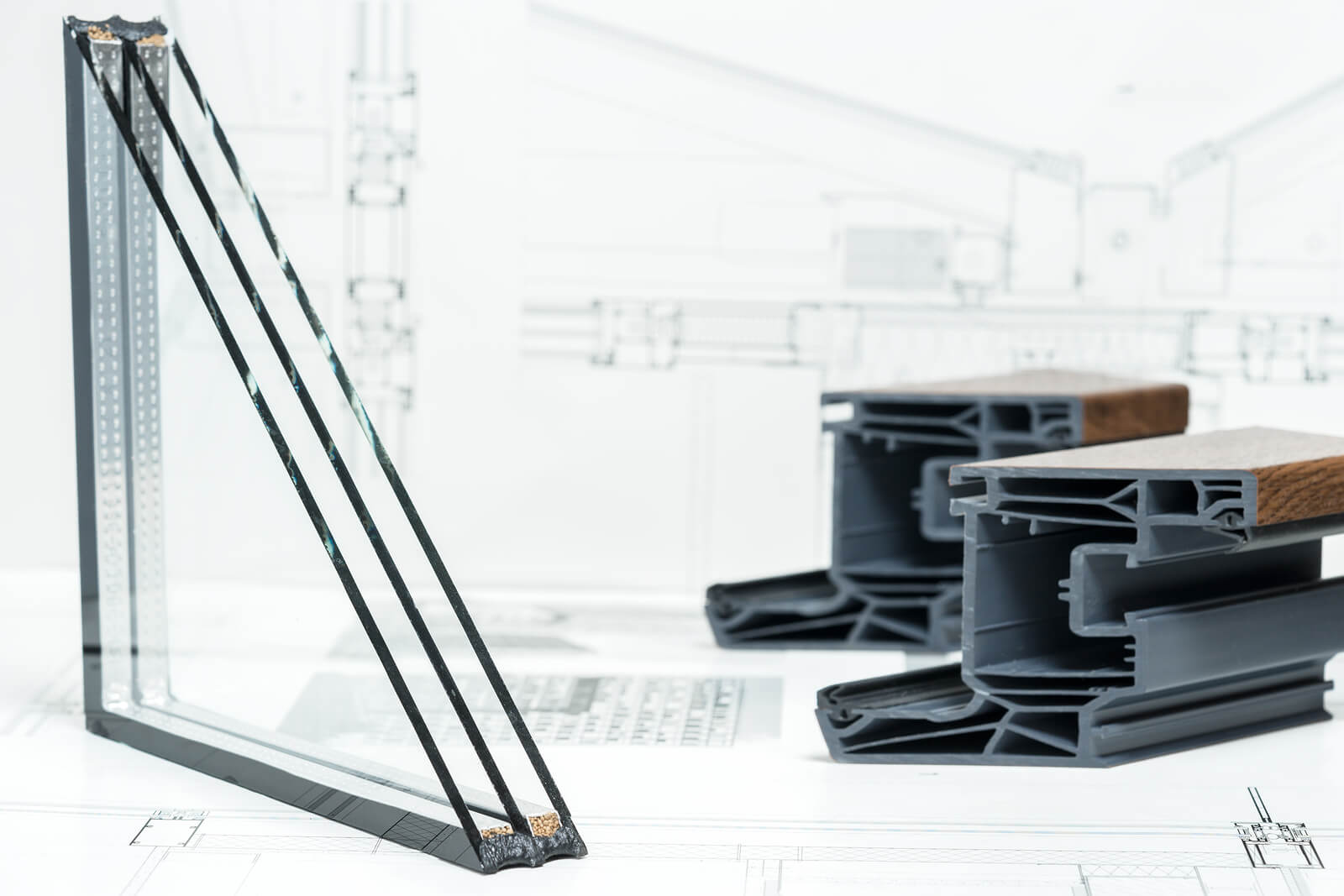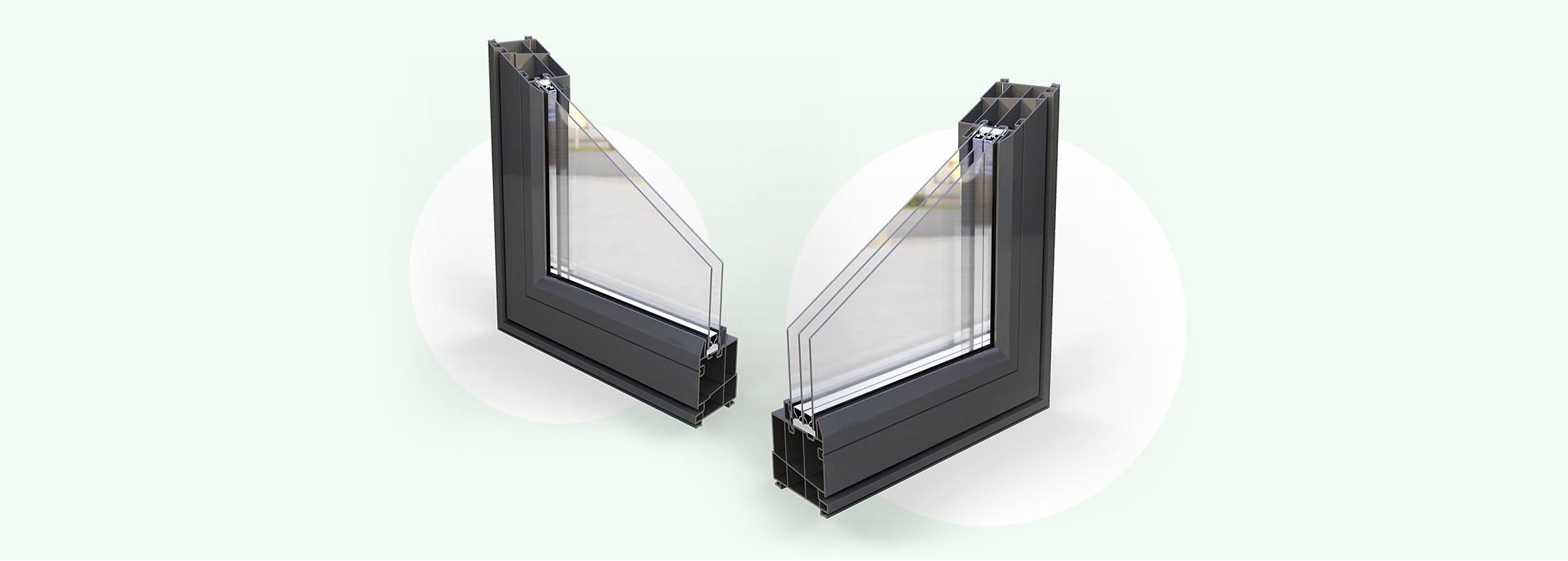

Argon or Krypton Gas for Windows: What’s Better? [2025]
Sep 20, 2024
Jan 24, 2025
5 min read
3876
There are two main gas fills used in modern replacement windows. But how do you determine whether argon or krypton is better for your window order?
Imagine an Olympic swimming pool. Now imagine how many basketballs it would take to fill it. The answer is 105,604. Picture that same pool packed with baseballs. All 352,000 of them.
That’s the main difference between Argon and Krypton. But still, let’s dive into details and compare argon vs krypton windows, determining which unit will ultimately come out on top in 2025.
Understanding Inert Gas Fills in Energy-Efficient Windows
Inert gas fills play a crucial role in improving the thermal performance of any modern energy-efficient window. These gasses are pumped between the panes of double or triple-pane windows to reduce heat transfer and enhance insulation. By filling the space between the glass, they minimise convection currents, leading to better temperature regulation within your home.
- Inert gasses are clear, non-toxic, odorless fills that significantly decrease heat transfer between your home and the outside.
Why Use Inert Gas Fills in Windows?
When your windows are filled with air, the natural movement of air molecules can carry heat across the glass panes, reducing the insulating properties of your windows. In contrast, inert gasses have lower thermal conductivity than air, making them much more effective at slowing heat transfer. This results in a higher R-value, or insulation value, for the window, keeping your home warmer in the winter and cooler in the summer.

By reducing the energy required to maintain a comfortable indoor temperature, inert gas-filled windows not only improve comfort but also significantly save energy bills. Additionally, these windows can contribute to a home’s overall energy efficiency, which may be a key factor in qualifying for government rebates or energy efficiency certifications.
There are two most popular inert gas fills for modern windows in Canada – Argon and Krypton. But what’s the difference and what homeowners should know when shopping for both types of windows?
What are Argon Insulated Windows?
Argon is the cheaper option on the market. Its thermal conductivity is two-thirds that of air, making it an attractive option.
Thus, argon windows are energy-efficient models that use argon gas as a filler between the panes of glass. Argon, an inert gas, is denser than air and has about 34% lower thermal conductivity. This helps reduce heat transfer through the window, providing superior insulation compared to air-filled windows.
Argon is non-toxic, colourless, and odourless, making it an ideal choice for enhancing energy efficiency without affecting the window’s appearance. By improving the window’s insulation, argon-filled windows can lower energy costs, maintain indoor comfort, and reduce a home’s environmental footprint.
This option is commonly used in double-pane windows due to its cost-effectiveness and excellent thermal performance.
What Are Krypton Filled Windows?
Krypton windows are another type of energy-efficient window that uses krypton gas between the panes of glass. Krypton, like argon, is an inert gas, but it is denser and provides even better insulation in smaller spaces. This makes Krypton ideal for windows with thinner gaps between panes, such as triple-pane windows.
Though more expensive than argon, krypton-filled windows offer superior thermal performance by further minimising heat transfer. Krypton is particularly popular in high-performance, premium windows where energy efficiency is a top priority. The enhanced insulation provided by Krypton can result in significant savings on heating and cooling costs while maintaining consistent indoor temperatures.
Krypton vs Argon Windows – What to Choose for Your Next Replacement Project?
Both argon and krypton gas windows are effective at improving insulation in energy-efficient windows, but they differ in performance and cost. Here’s a breakdown of the two gases in common window applications:
- Energy Efficiency: Argon is a more efficient barrier in larger (1/2 inch) gaps between double-pane windows. Krypton is more efficient in tighter (1/4 – 3/8 inch) gaps in triple-pane krypton-filled windows.
- Price: Argon windows are more affordable, making them a popular choice for cost-effective insulation. Krypton windows, although pricier, deliver higher energy savings, especially in premium or custom windows.
- Best Applications: Argon is ideal for typical double pane windows, while krypton excels in high-performance windows with narrow gaps, such as triple-pane setups in colder climates or energy-conscious homes.
To get an optimal combination of price and performance, a combination of gasses can be used in different panes. Regardless of your choice, gas fills are an important efficiency feature in modern windows, so make sure to consult professional window installers before embarking on a renovation project.
F.A.Q
How long does krypton gas last in windows?
Krypton gas in windows lasts for approximately 20-30 years with minimal leakage. The gas is typically lost at a rate of 1% per year, meaning the windows will retain much of their insulating properties for decades.
Are argon-filled windows better?
Argon-filled windows are better in terms of affordability and energy efficiency for most homeowners. While krypton provides superior insulation, argon offers a balance of good insulation performance at a lower cost.
How does argon gas work in windows?
Argon gas reduces heat transfer by filling the space between glass panes. Its lower thermal conductivity compared to air provides better insulation, keeping homes warmer in the winter and cooler in the summer.








